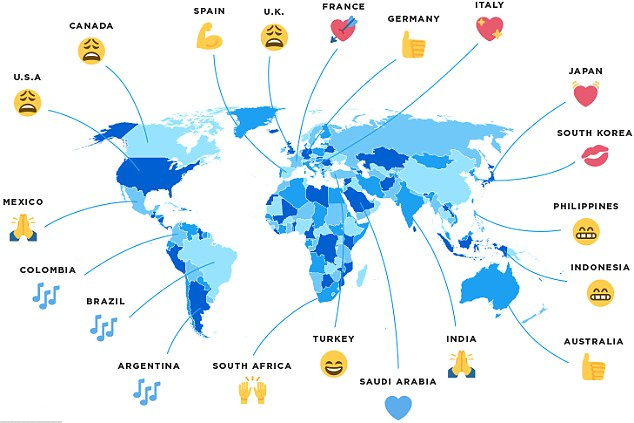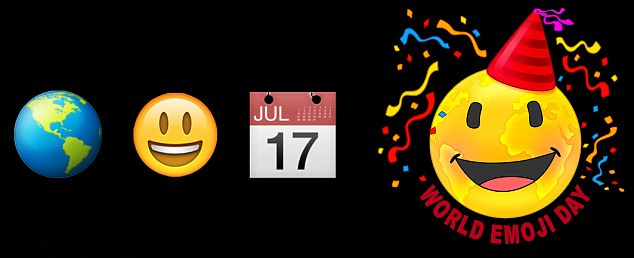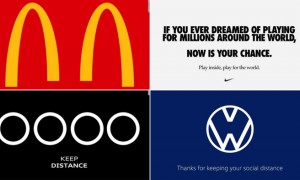导读:现在表情包几乎已经成为了网络聊天必不可少的东西了,中国网络用户“斗图”可谓群魔乱舞,但是外国人都喜欢使用什么表情包呢?

The people of France and Italy live up to their romantic stereotypes, the Spanish prefer to flex their muscles while the British and Americans mainly seem to be weary.
法国人和意大利人保持了他们一贯浪漫的态度,西班牙人却更喜欢展示自己的肌肉,而大多数英国和美国人则看起来很疲倦。
This is the view of the world that appears when looking at the most popular emojis that are used on Twitter in different countries.
通过统计各个国家推特用户们最喜欢的表情,就可以看到这些国家存在着这样的倾向。
The list was compiled ahead of World Emoji Day this Sunday, and seems to challenge some stereotypes while confirming others about different nations.
这份榜单刚好在本周日的“世界表情包日”前推出,似乎会改变人们对某些国家的刻板印象。
The unquellable positivity of Americans, for example, seems to be lacking from their use of emojis as they seem to most often use the weary face icon.
举例来说,从使用的表情包来看,美国人似乎不像人们认为的那样积极乐观,他们最经常使用的是一张疲惫的脸。
Turkey, by comparison, favours a more classic smiley face.
和美国人相比,土耳其人更喜欢一张经典的笑脸。
France and Italy most often use heart shaped emojis related to love - perhaps not surprising for countries that are most commonly regarded as the most romantic in the world.
法国和意大利的人则更经常使用和爱有关的心形表情--也许对这两个被认为是世界上最浪漫的国家来说并不是一件让人惊讶的事。
Surprisingly, however, the Japanese also seem to like using a beating heart emoji that is often used to denote love.
但是令人吃惊的是,日本人似乎也非常喜欢使用一个跳动的心脏的图案,这个图案一般被用来示爱。
Saudi Arabia uses a rather bizarre blue heart, which could be seen as rather cold hearted. South Koreans seem to prefer a symbol of kissing lips.
沙特人很喜欢用一个怪异的蓝色的心形图案,这可能被看作是想表达自己很“冷漠”的意思。韩国人则更喜欢亲吻的嘴唇。
In Brazil, Colombia and Argentina, countries known for their love of rhythm, people favour musical notes..
在巴西、哥伦比亚和阿根廷这些以喜好音乐而出名的国家,人们最喜欢的是音乐符。

’World Emoji Day’ has been designated as 17 July because the date famously features on the ’Calendar’ emoji in iOS operating systems.
7月17日是“世界表情包日”,因为在iOS操作系统中,“日历”表情上面的日期就是7月17日。
To celebrate the day, Twitter analysed how emojis are used around the world.
为了庆祝这一天,推特分析了全球用户的表情包使用情况。
Somewhat expectedly, Australians are optimistic Tweeters, choosing the thumbs up emoji. Perhaps more surprisingly, the Germans also use the symbol, despite often being characterised as somewhat serious.
跟预期的差不多,澳大利亚的推特用户们很乐观,他们最喜欢竖起大拇指的表情。但是让人非常吃惊的是,德国人也喜欢使用这个表情,尽管他们经常给人以很严肃的印象。
South Africans are keen on putting their hands in the air and the Spanish like to show off their arm muscles.
南非人喜欢使用一双手的那个表情,而西班牙人则更喜欢展示肌肉的表情。
While people in India and Mexico are more religious or spiritual, favouring the ’person with folded hands’.
印度和墨西哥的人更加虔诚一些,他们更加喜欢“双手合十”的表情。
In May last year, emoji was named as the world’s fastest growing language.
去年5月份,表情包被称之为全世界发展最快的语言。
Earlier this week, Google revealed a series of new emojis in efforts to better embrace the diversity of its many users.
本周早些时候,谷歌发布了一系列新表情包,以此来更好的吸引其多样化的用户群。
The new emojis include 11 new professions, from rock star to scientist, each available in both male and female, and across all skin colours.
谷歌的新表情包有摇滚明星和科学家等11个新职业,每一种职业都有男性和女性两种表情,并且涵盖了所有的肤色。
In addition to this, 33 existing emojis are set to be updated to include a version for both genders.
另外,谷歌还把已有的33个表情进行了更新,使得每一个表情都有男女两种版本。







